
MDOT Tightening Budget Belt
Written by Marybeth Luczak, Executive Editor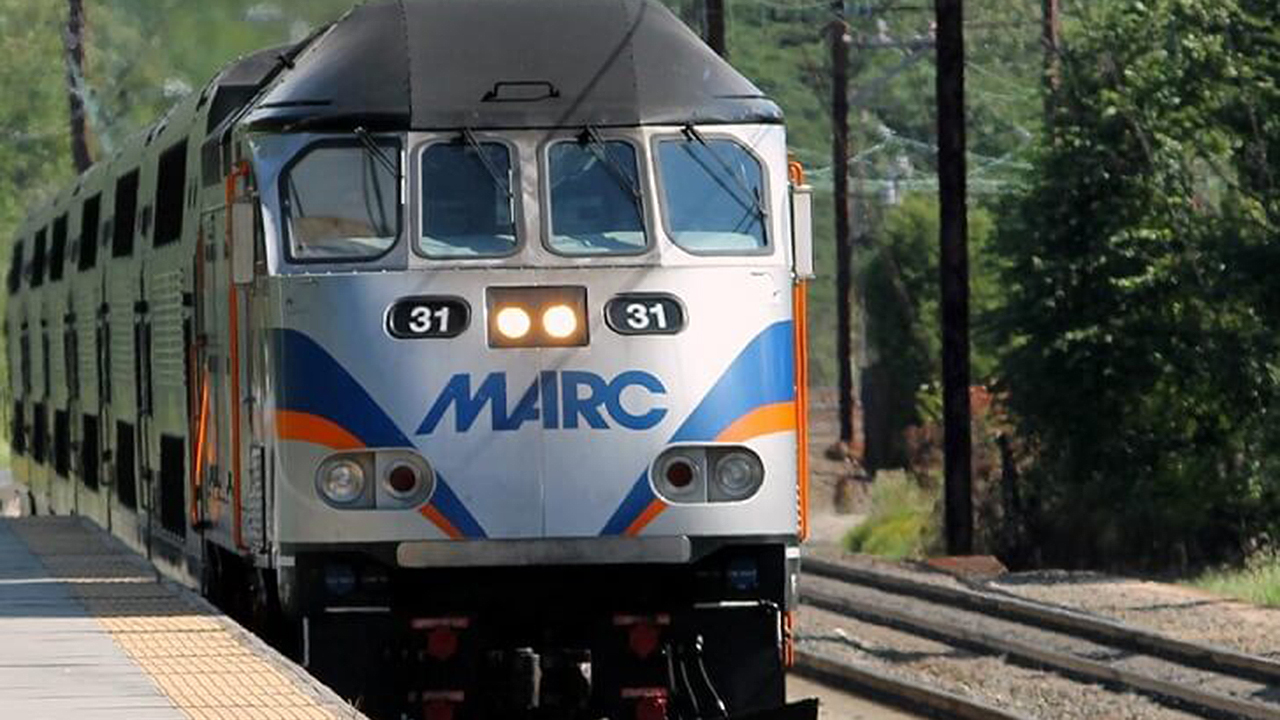
(Maryland DOT Photograph)
The state of Maryland’s six-year transportation spending plan includes some $3.3 billion in proposed cuts across modal administrations to address “declining revenue projections,” it reported Dec. 5.
The Maryland Department of Transportation (MDOT) announced an overview of the final FY 2024-2029 Consolidated Transportation Program (CTP) (download below), which it said reflects “a structural financial deficit in state transportation funding.”
The final, nearly $20 billion CTP will be released in January. The six-year program, MDOT said, will include “corresponding reductions across the department while maintaining an essential focus on safety, maintenance and strategic investment.” It noted that the updated program retains project development funds for Baltimore’s Red Line, Southern Maryland Rapid Transit, the Frederick Douglass Tunnel Project, the replacement American Legion Bridge and other key projects.
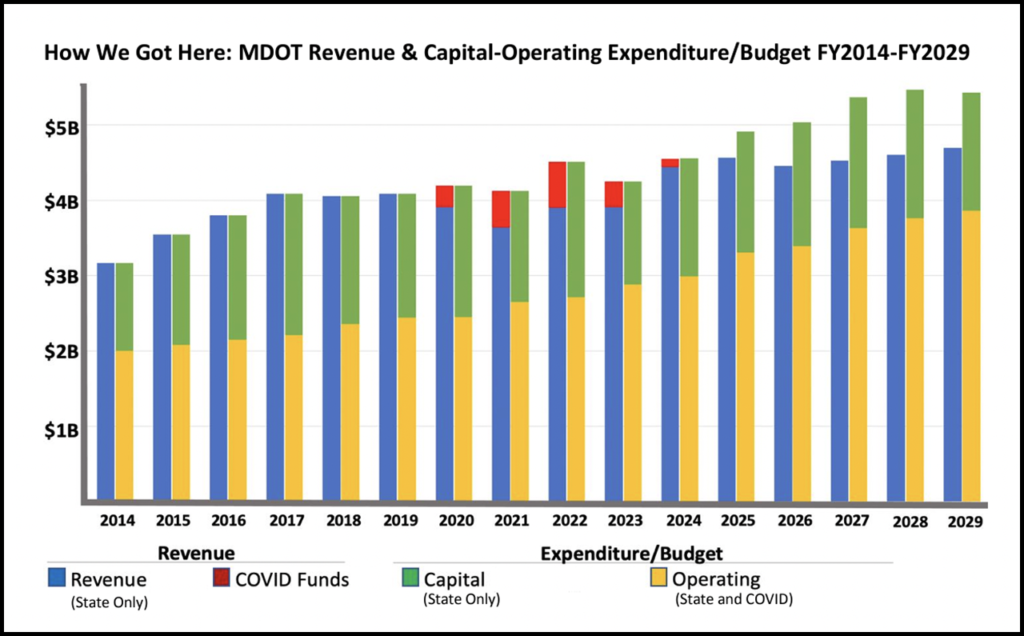
MDOT said it will address declining revenue projections through a “balanced approach” of roughly:
• $1 billion in reductions in its operating budget (see below for what’s included and what’s not).
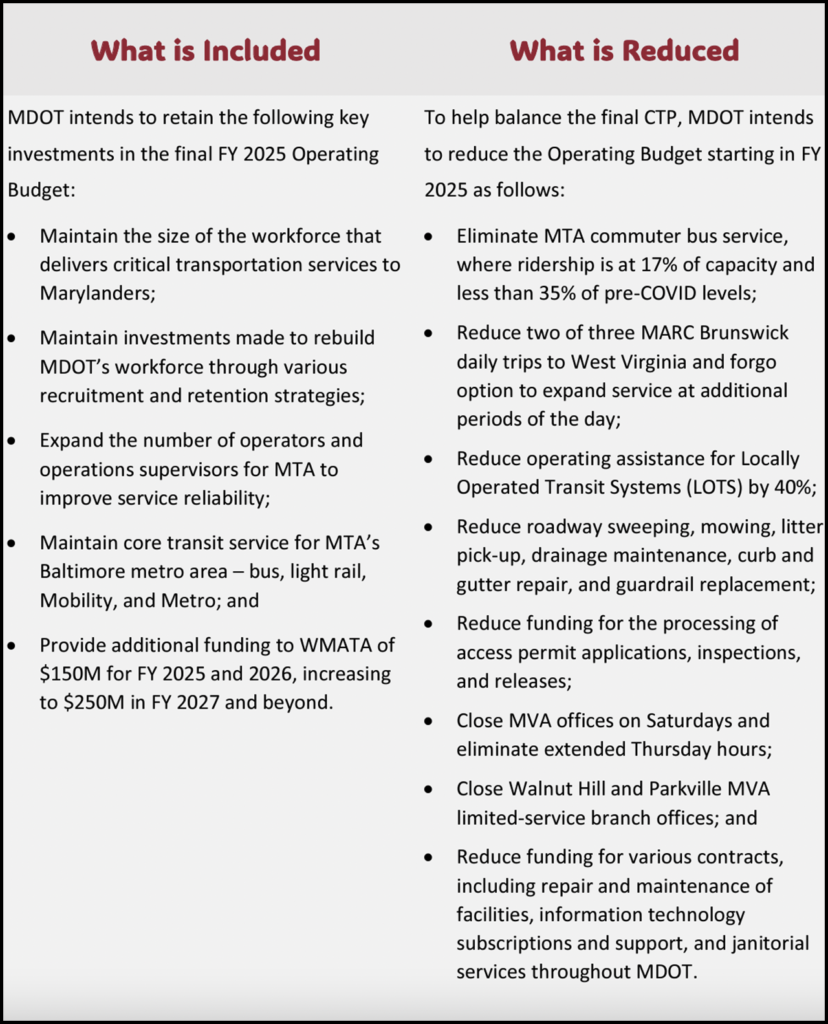
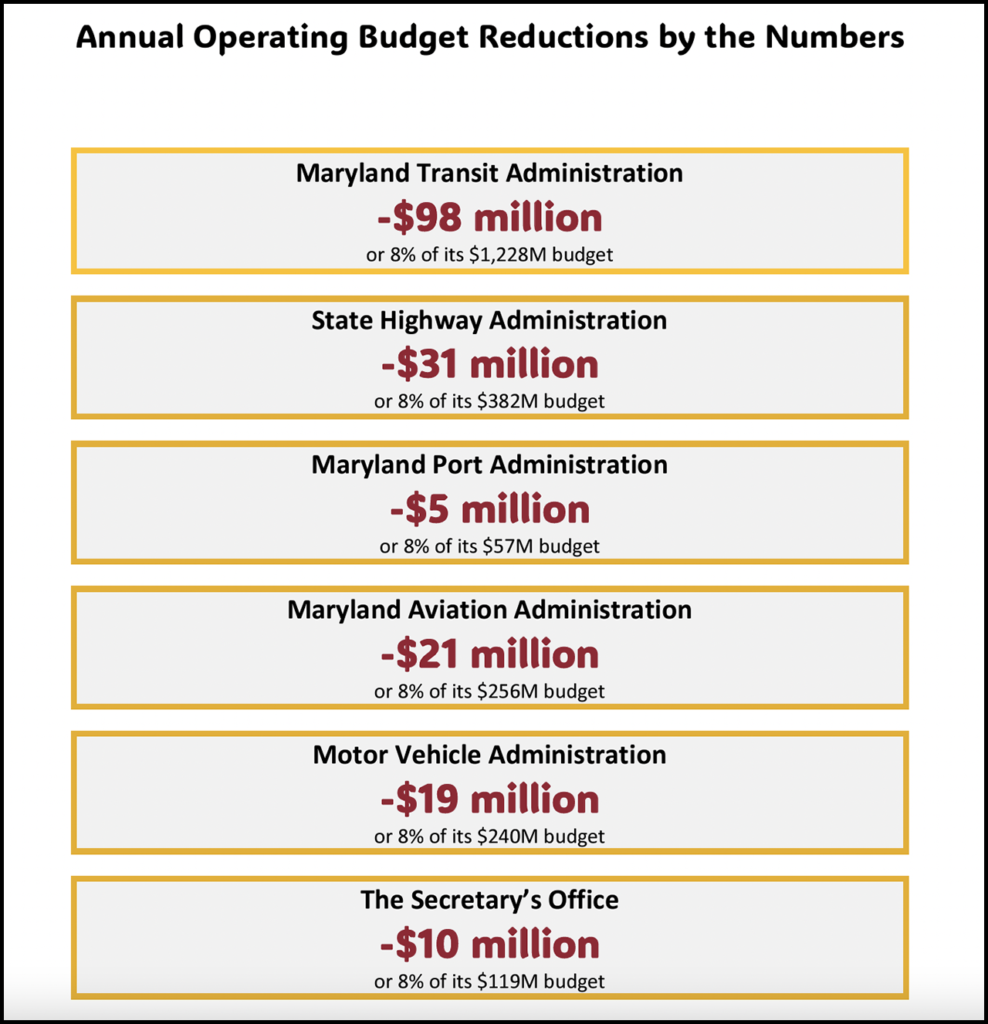
• $2 billion from its capital program (see below for Maryland Transit Administration reductions).
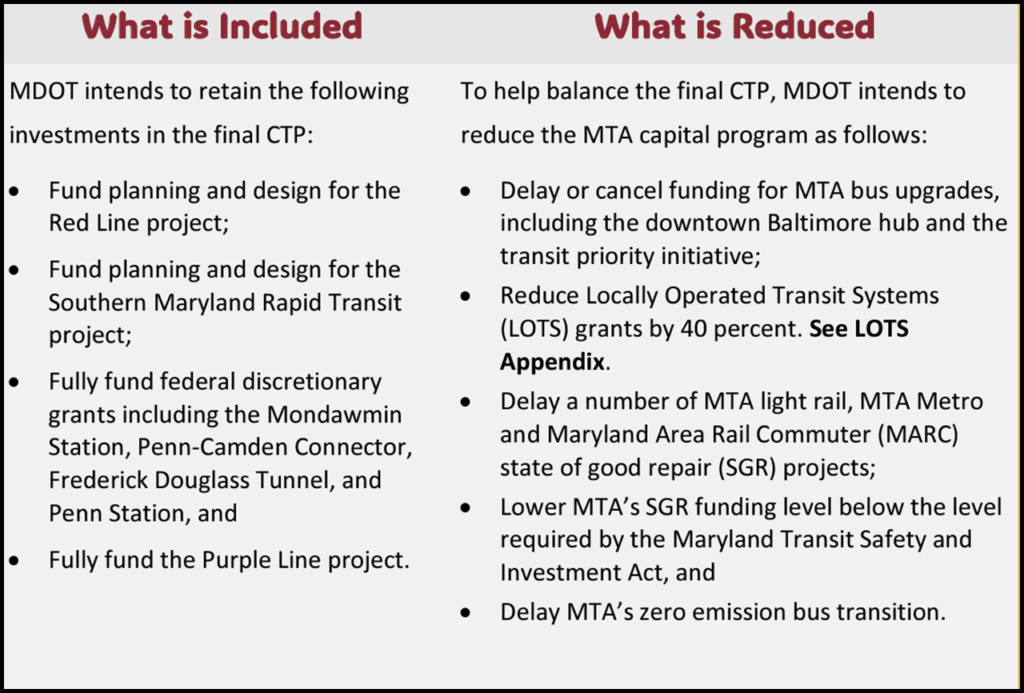
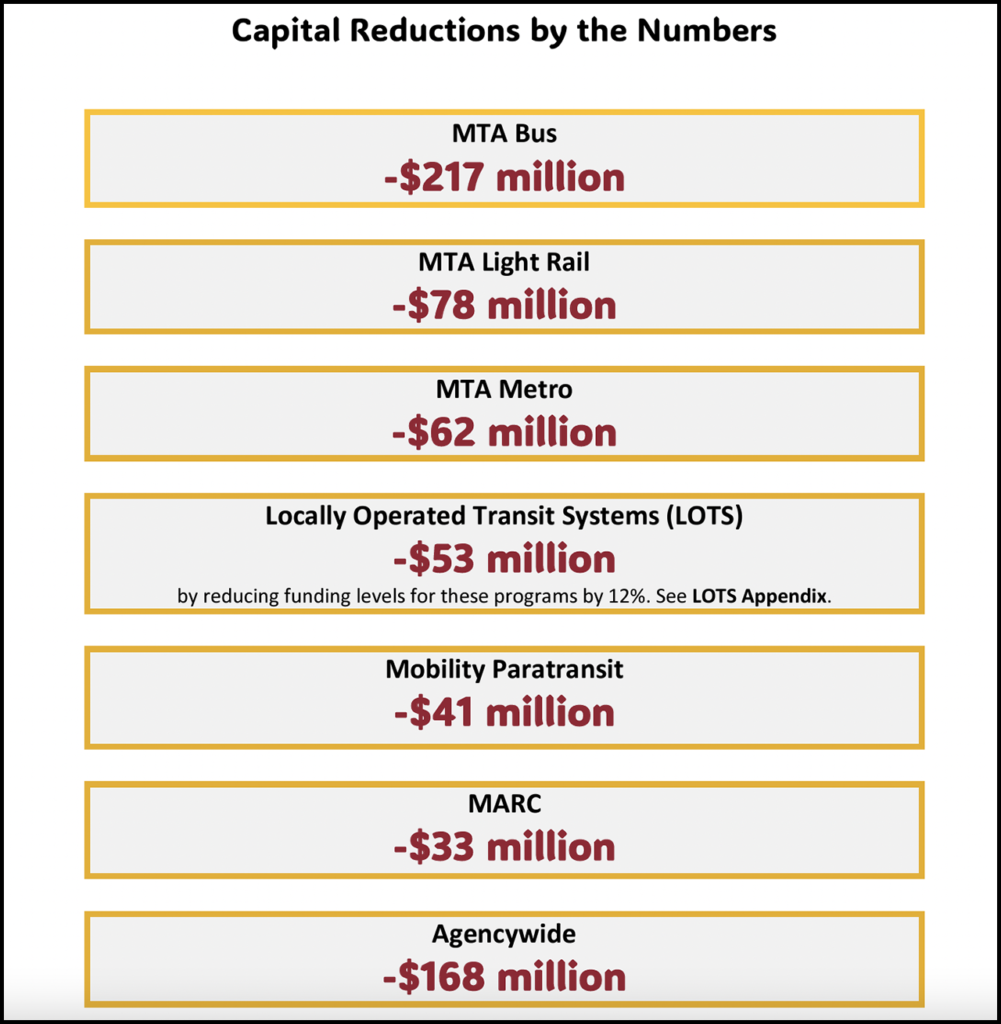
• About $400 million in limited reductions in grants to local governments.
MDOT noted that the reductions are “targeted to limit the overall impact on Marylanders and will not jeopardize safety or key economic investments.”
According to MDOT, it will also continue to pursue federal funding for projects throughout the state. It said that the final FY 2024-2029 CTP will provide state matching funds for key federal grant awards including the recent investment from the U.S. Department of Transportation of $7 billion for rail grants to improve MARC Penn Line commuter rail and Amtrak Northeast Corridor intercity passenger rail services, relieve Northeast Corridor bottlenecks, and spur job and economic growth throughout the region, including $4.7 billion for the new Frederick Douglass Tunnel Program.
For highway and transit expansion projects, MDOT said it intends to develop a project prioritization system that will “evaluate project benefits in terms of meeting state transportation goals relative to cost” and be used to help rank projects included in future CTPs.
“Families all across Maryland are still feeling the effects of inflation and making decisions and sacrifices to live within their means and balance their household budgets,” MDOT Secretary Paul J. Wiedefeld said. “It’s vital that state government does the same. This is not a new problem for our state. In 2020, the Department of Legislative Services identified that Maryland’s transportation program had a structural issue with operating costs increasing faster than overall revenues. Since 2020, these issues have been exacerbated by historic inflation impacting labor and materials costs, depleted COVID-19 relief funding, and the gradual decline of transportation’s largest revenue source–motor fuel tax revenue.
“Federal dollars—and our outstanding federal partnerships–will help us strengthen our assets and grow our economy in the long-term. Maryland’s economy is making tremendous progress, and strategic investment in transportation is vital to keep it growing, thriving and evolving while supporting people and communities.”
As for next steps, MDOT said it has been “closely involved with the Maryland Commission on Transportation Revenue and Infrastructure Needs, which was established by the General Assembly to review, evaluate and make recommendations on subjects including funding sources and structure of the Transportation Trust Fund, short- and long-term transportation funding needs and practices for prioritizing project funding.”
In addition to the release and publication of MDOT’s six-year final CTP in January, the Governor of Maryland’s FY 2025 budget will be published. The General Assembly is slated to review that budget between January and April.



